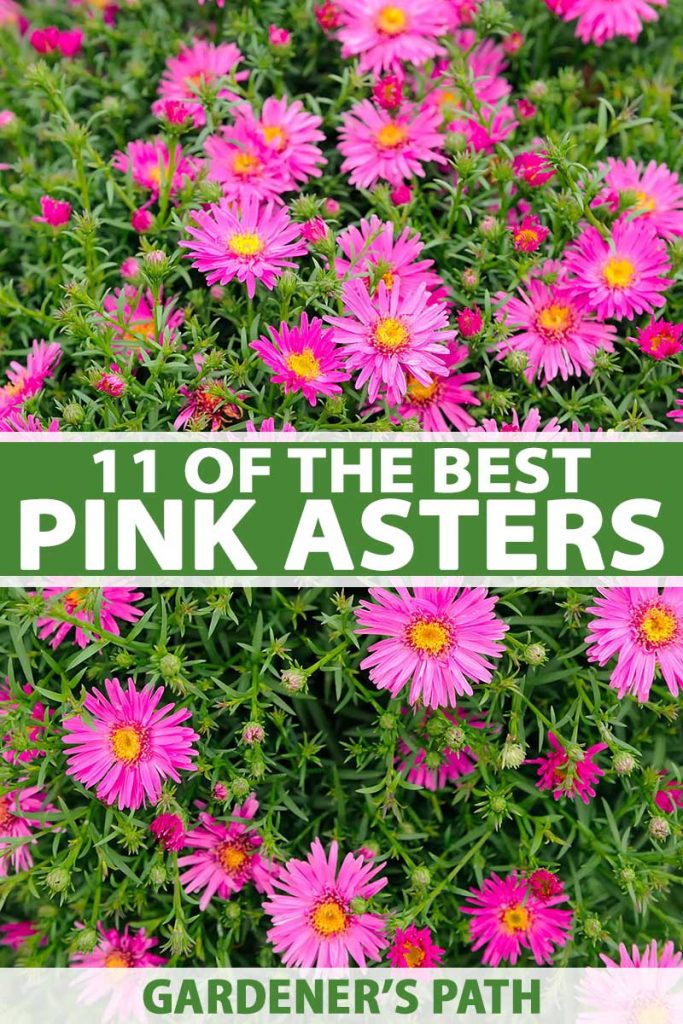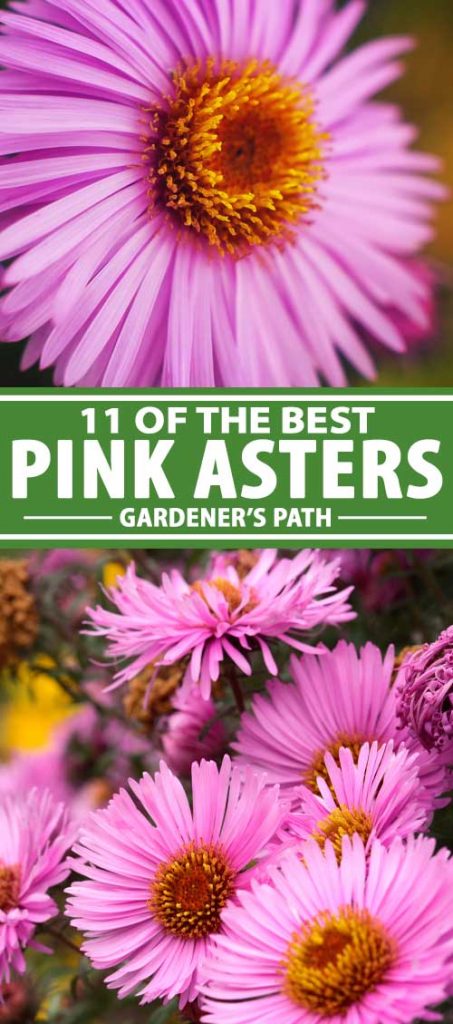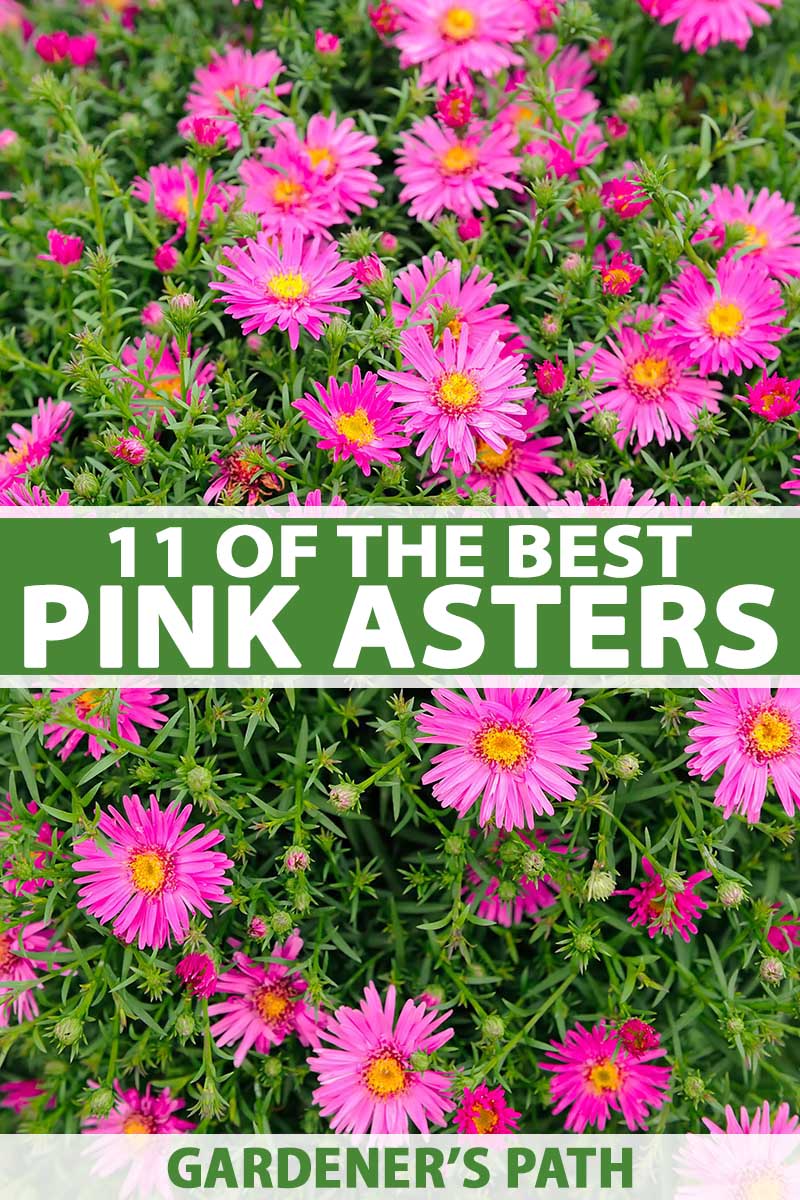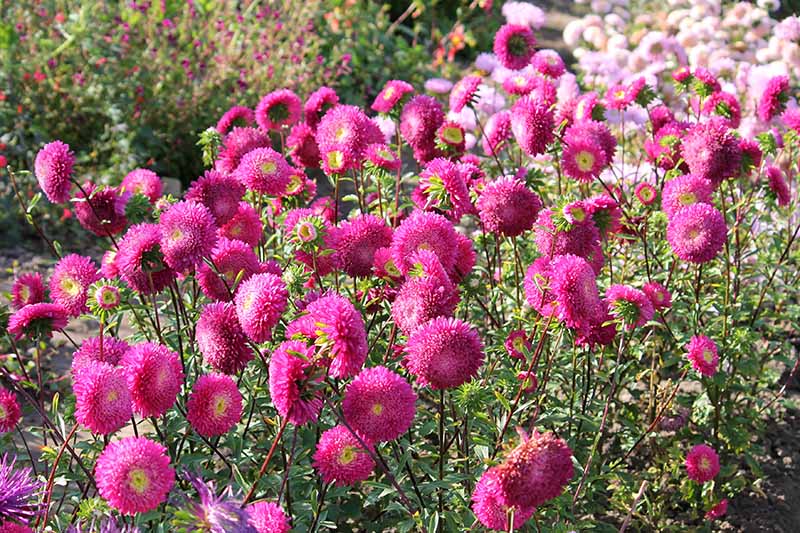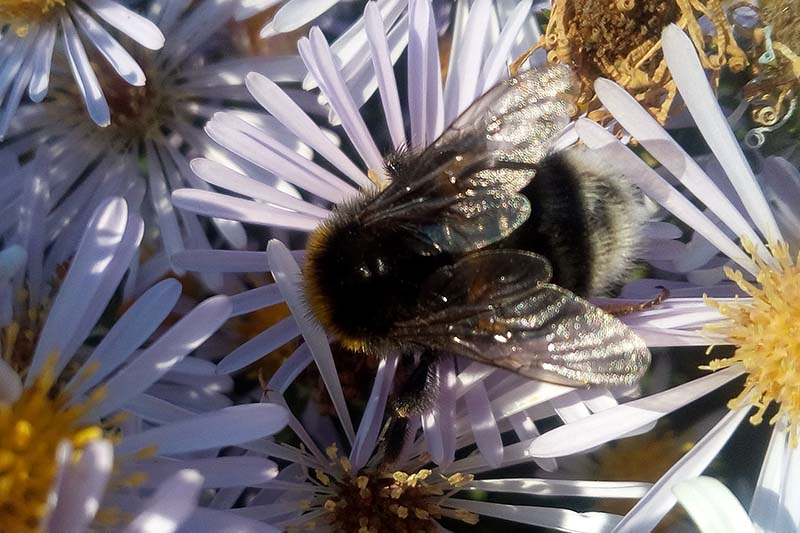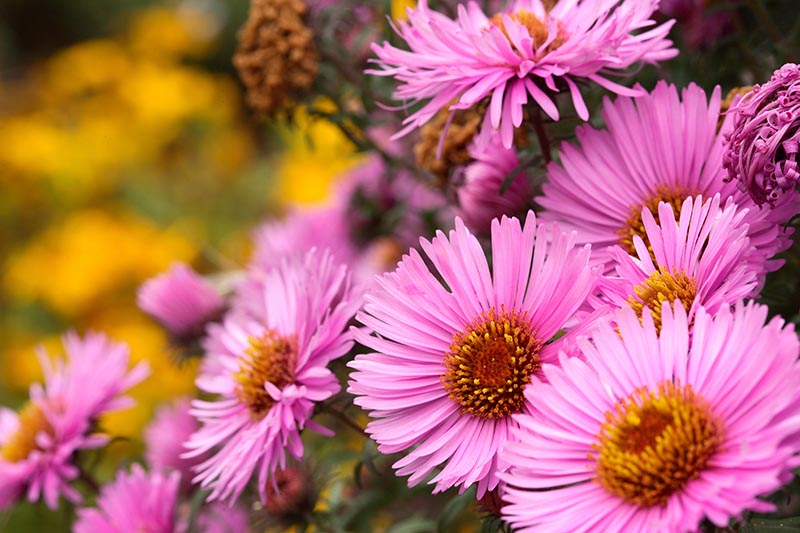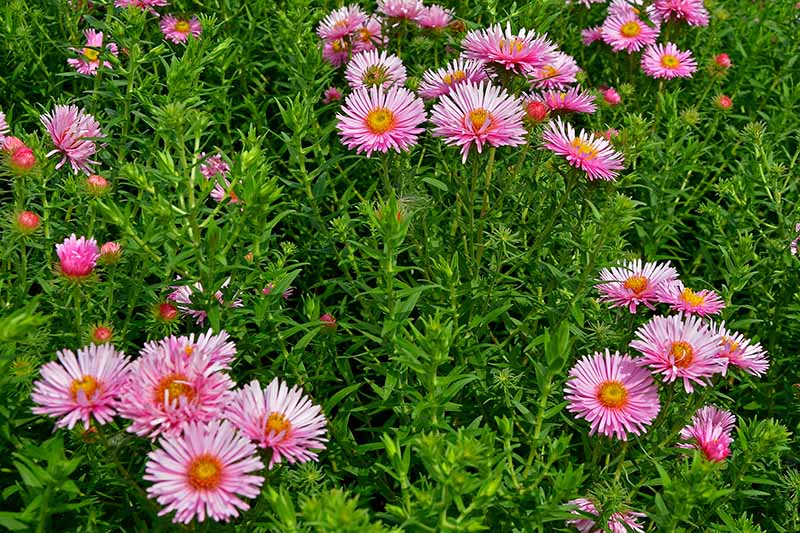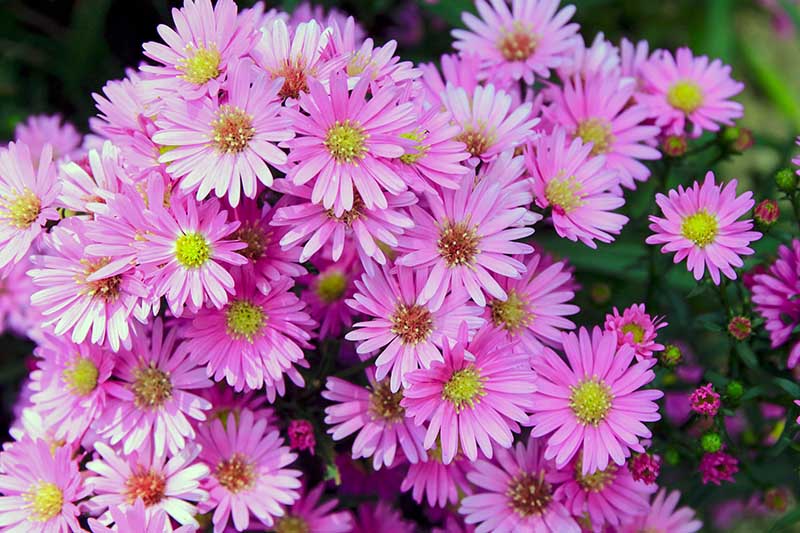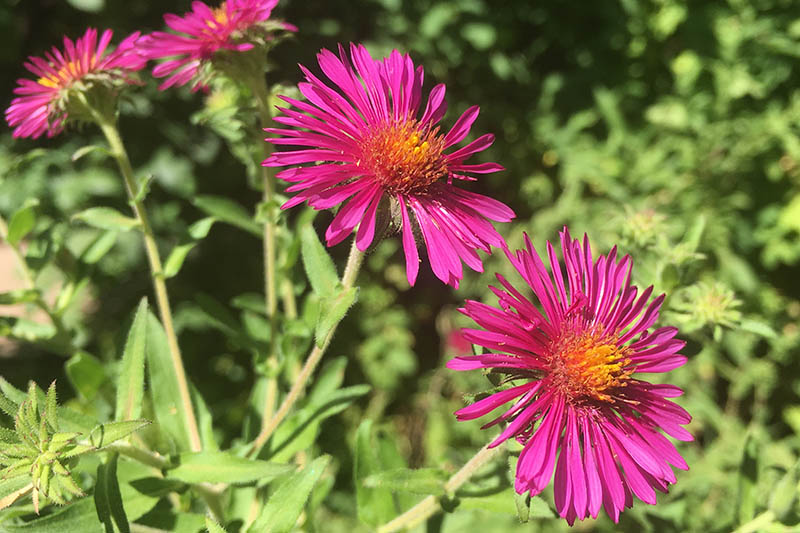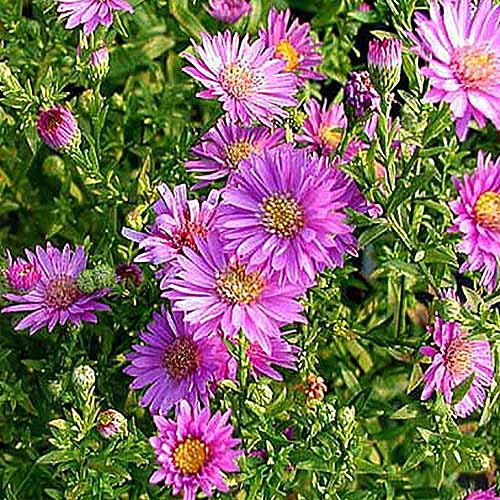With a varied palette of lights and darks, they can cool down or heat up their surroundings with swaths of color that mix well with other seasonal hues. “Aster” refers to a number of members of the large Asteraceae family of flowering plants. But many of the plants we commonly call “asters” are not in fact classified in the Aster genus. This is because, over the years, this plant family has been fine tuned to distinguish “true” asters from other closely related flowers. We link to vendors to help you find relevant products. If you buy from one of our links, we may earn a commission. In this roundup, we’ve included varieties from the US native species Symphyotrichum novae-angliae; the China aster, Callistephus chinensi; the European Michaelmas daisy, Aster amellus; and the delicate alpine type, Aster alpinus.
Get ready to discover your new favorites, as we take a closer look at 11 outstanding pink aster varieties. It is an aggressive grower that blooms from late summer to early fall. Its flowers consist of fine fuchsia rays with yellow centers atop especially sturdy stems. It tops out at 2 1/2- to 4-feet-tall, and benefits from pinching back in midsummer to maintain its compact form. ‘Andenken an Alma Potschke’ thrives in a full sun location with moist, well-draining, fertile soil.
2. Audrey
Another US native perennial cultivar, this New York type, S. novi-belgii ‘Audrey,’ is also ideal for gardeners in Zones 4 to 8. Blooming in late summer to mid-fall, slender rays blush with the palest of pink and surround yellow center disks. Flowers are clustered on narrow, branched stems. ‘Audrey’ is a dwarf variety that reaches a low-profile height of 12 to 18 inches at maturity, with a moderate growth rate. Grow ‘Audrey’ in full sun with average to rich, moist, well-draining soil. This variety tolerates salt and dry conditions.
3. Barr’s Pink
S. novae-angliae ‘Barr’s Pink’ is a New England native perennial cultivar suitable for growers in Zones 4 to 8. Bloom time is from early to mid-fall. Large semi-double blossoms resemble daisies with layers of bright lavender-pink rays around a golden disk. Its maximum height is about 5 feet tall at maturity, with foliage that grows in a clumping fashion. Cultivate this variety in full sun with rich, well-draining soil. It tolerates some shade, excess moisture, and drought.
4. Harrington’s Pink
S. novae-angliae ‘Harrington’s Pink’ is a New England cultivar that thrives in Zones 4 to 8 and grows to a mature height of 4 to 6 feet. It’s a vigorous grower that blooms from late summer to late fall. Blossoms with multiple layers of extra-narrow rays resemble cotton candy and surround golden centers. Foliage is upright and branching. This cultivar appreciates full sun and moist, average to fertile, well-draining soil. It tolerates some excess moisture.
5. Jewelaster Rose
C. chinensis ‘Jewelaster Rose’ is a low-profile dwarf China aster cultivar. It’s an annual, suitable for Zones 3 to 9, that tops out at about 16 inches tall. ‘Jewelaster Rose’ blooms from late summer to late fall, and with regular deadheading throughout the growing season, is especially prolific.
‘Jewelaster Rose’ Frilly rose rays are so dense that they nearly obscure the sunny centers. Foliage supports one flower per stem. Plant in full sun in average to fertile soil that drains well and is moderately moist. Find seeds in a variety of packet sizes now from Eden Brothers.
6. KICKIN® Pink Chiffon
S. novae-angliae ‘KICKIN® Pink Chiffon’ is a New England native cultivar suitable for gardeners in Zones 4 to 8. It’s a low-profile plant that tops out at a petite 12 to 18 inches. ‘KICKIN® Pink Chiffon’ ‘KICKIN® Pink Chiffon’ blooms from late summer to early fall. Flowers cluster atop dense, sturdy foliage. An abundance of pastel pink rays that almost imperceptibly fade to white at the margins surround sunny yellow centers. Plant in a full sun location and rich, well-draining soil. Clay soil may be tolerated.
7. Milady Rose
C. chinensis ‘Milady Rose’ is a China aster cultivar suitable for Zones 3 to 9. Large, full-double blossoms resembling those of a chrysanthemum bloom from early summer to fall. Dense layers of rose rays virtually obscure the yellow center disks. ‘Milady Rose’ ‘Milady Rose’ is a compact dwarf annual that reaches a mature height of about 10 inches tall. Provide full sun and rich, well-draining soil for best performance.
8. Pink Zenith
Also known as ‘Rosa Erfüllung,’ A. amellus ‘Pink Zenith’ is a perennial European Michaelmas daisy cultivar suited to Zones 5 to 8. It has a petite stature of 1 to 2 feet tall. Bloom time is from late summer to fall. This type closely resembles the daisy in proportion and stem configuration. Mauve rays surround yellow disks. This variety thrives in a full sun location and average to rich, well-drained soil. It exhibits above average drought tolerance.
9. September Ruby
A bold choice suited to Zones 3 to 9, S. novae-angliae ‘September Ruby’ is a moderately vigorous New England native perennial cultivar that matures to a manageable 3 to 4 feet tall. Bloom time is from late summer to mid-fall. Fine rays of bold magenta surround orange-yellow center disks. Flowers are clustered on sturdy, branching stems. A midsummer pinching helps to maintain its dense, bushy shape. ‘September Ruby’ For best results, plant in full sun with well-draining, moist, fertile soil. This type tolerates clay and sand.
10. Wargrave Variety
A. alpinus ‘Wargrave Variety’ is a perennial alpine aster cultivar suitable for growers in Zones 4 to 7. Flowers resembling daisies consist of sparse lavender-pink rays around prominent gold centers and bloom from late spring to early summer. With a mature height of between 8 and 12 inches tall, each bloom is borne on its own stem, unlike branching, clustered varieties. This type prefers full sun and average soil that drains well. It is very tolerant of cold, drought, part shade, and poor soil.
11. Wood’s Pink
S. novae-angliae ‘Wood’s Pink,’ a New York native perennial cultivar, is a dwarf type that tops out at 12 to 18 inches tall. It thrives in Zones 4 to 8. Bloom time is from late summer to early fall, with clusters of semi-double fuchsia rays surrounding vivid gold disks.
‘Wood’s Pink’ This fast-growing variety forms a mounding, bushy habit. Plant in full sun with moist, rich soil that drains well. This type tolerates clay, drought, excess moisture, salt, and some shade. Find plants in 6-inch pots now at Home Depot.
In the Pink
It’s always fun to add a new plant to the garden, especially when it’s a vigorous, undemanding one with pretty flowers. But beds, borders, and containers overflowing with pink flowers do more than just brighten up the landscape. They’re an open invitation to a variety of pollinators and hungry backyard birds.
When choosing your flowers, consider dwarf varieties when you want a compact growth habit suitable for small spaces and container gardening. Large native species are your best bet where there’s room for naturalization, such as along a property perimeter, or in a meadow. We can’t wait to hear how your new favorites play a role in your garden scheme this year. Please tell us in the comments section below. To learn more about growing asters in your garden, check out the following guides next:
11 White Aster Varieties for the Late Summer to Fall Garden How to Grow and Care for Early-Blooming Alpine Aster Grow New England Aster for Sensational Summer and Fall Color Plant China Aster for Color in the Late Summer Garden
© Ask the Experts, LLC. ALL RIGHTS RESERVED. See our TOS for more details. Product photos via Eden Brothers, Hazzard’s Seeds, Hirt’s Gardens, and Javagado Land. Uncredited photos: Shutterstock.
